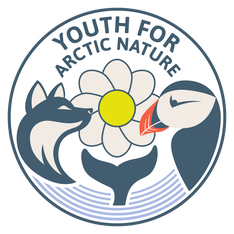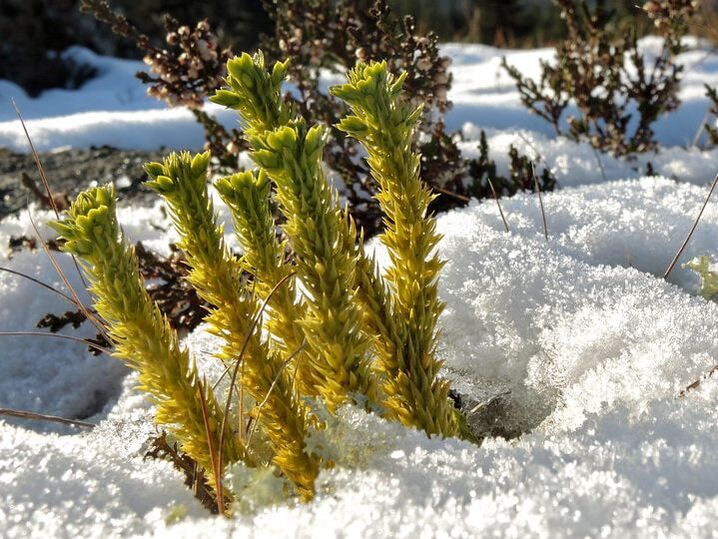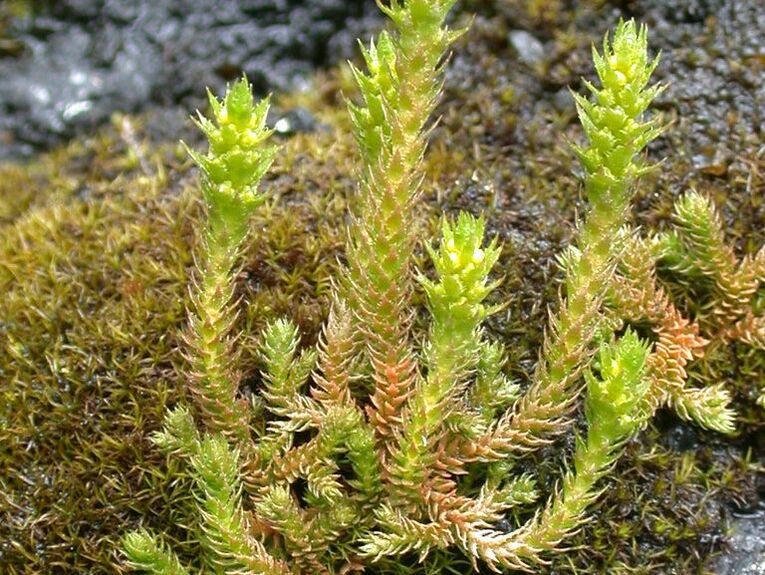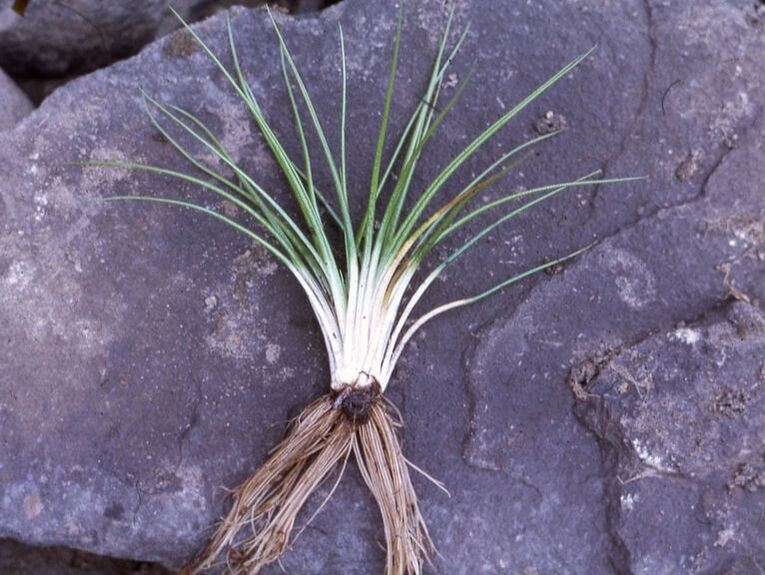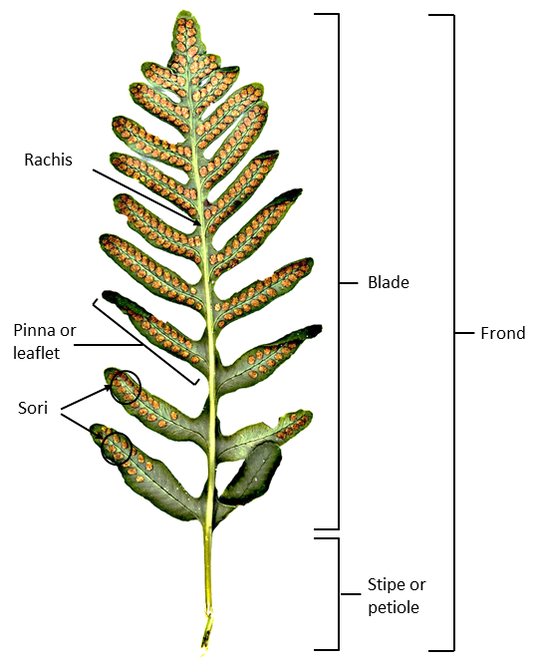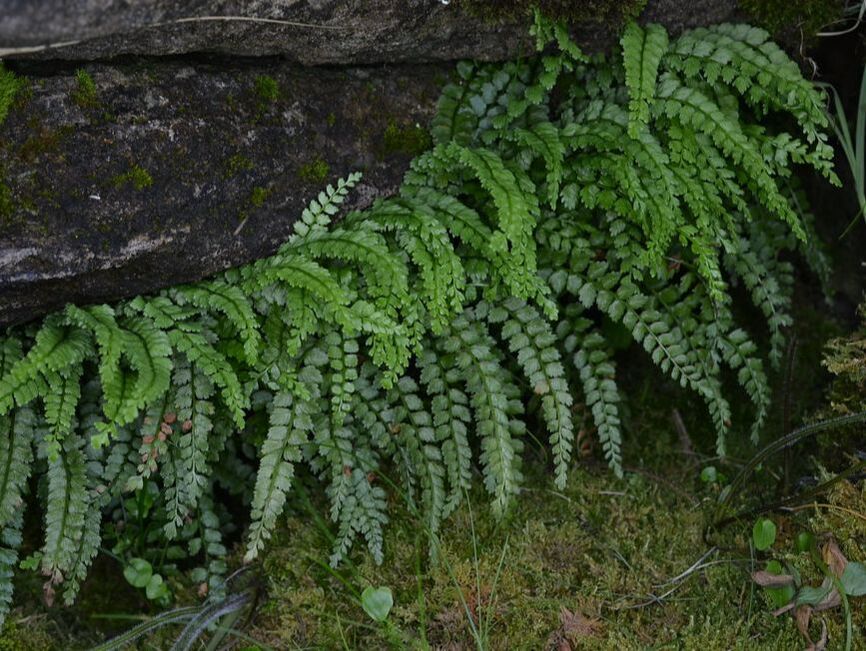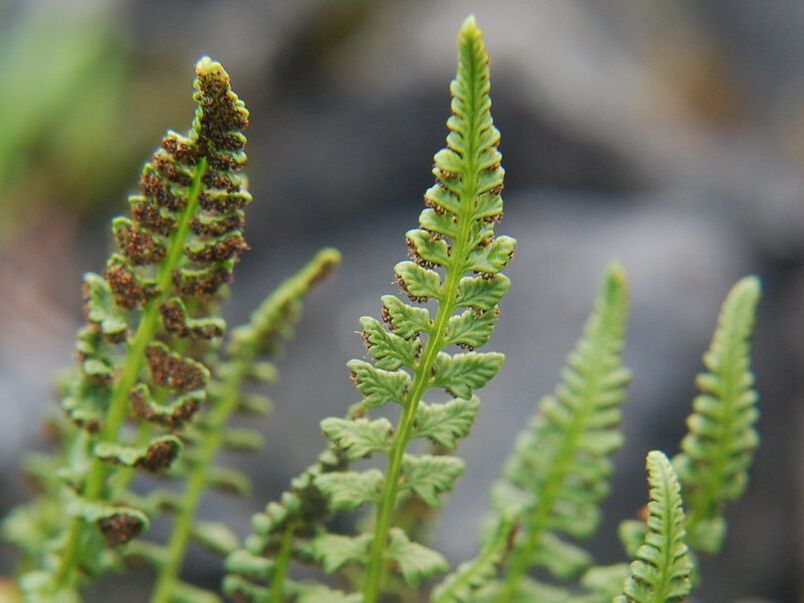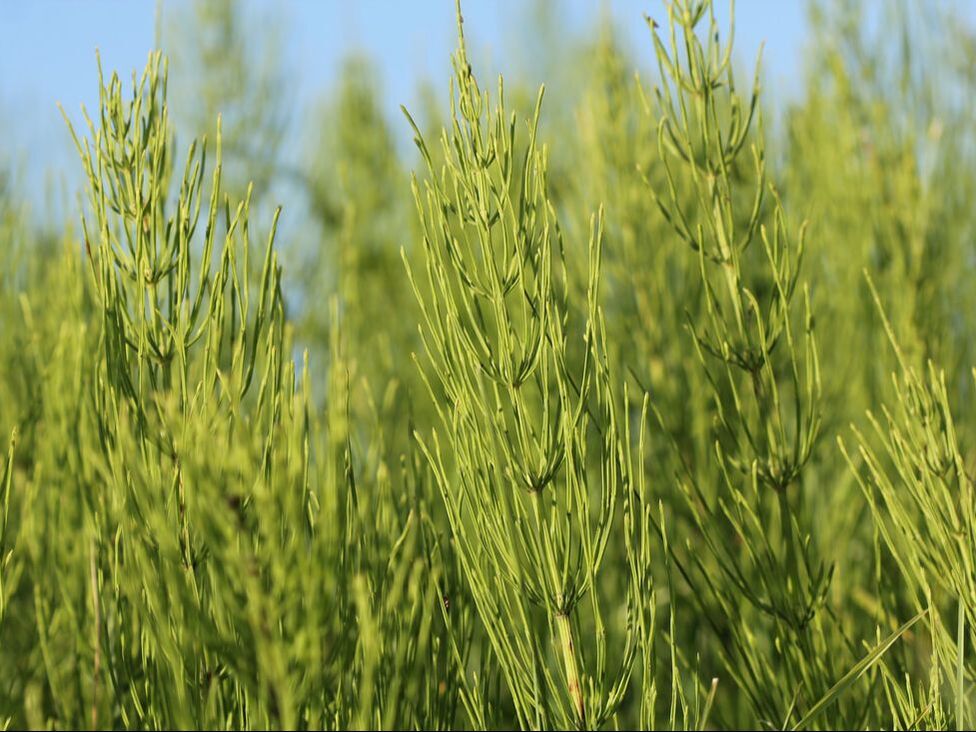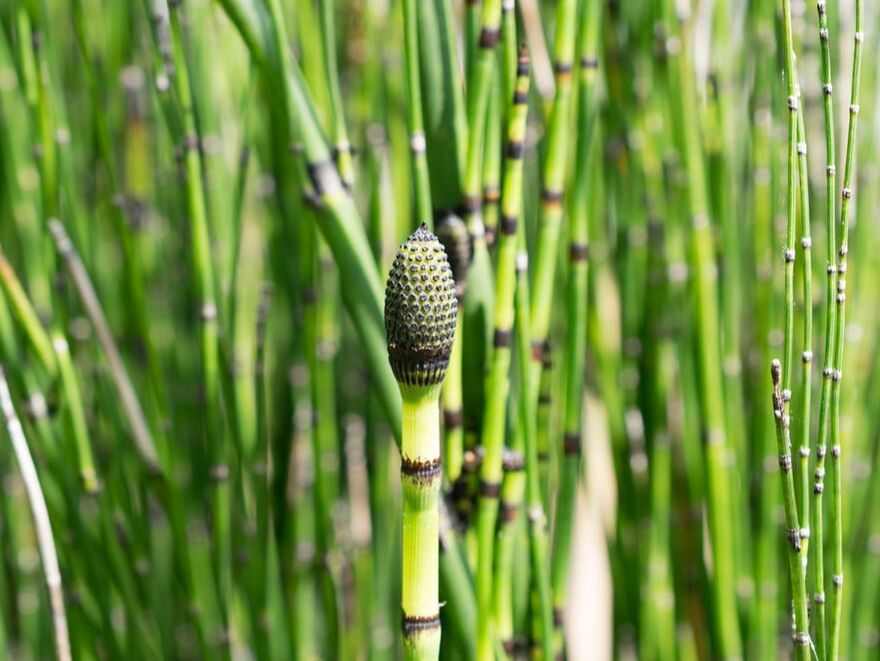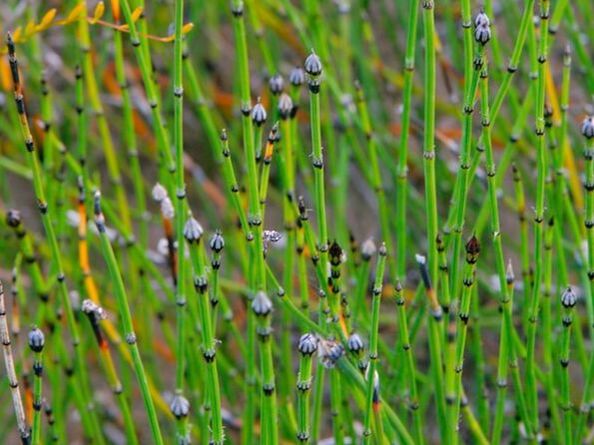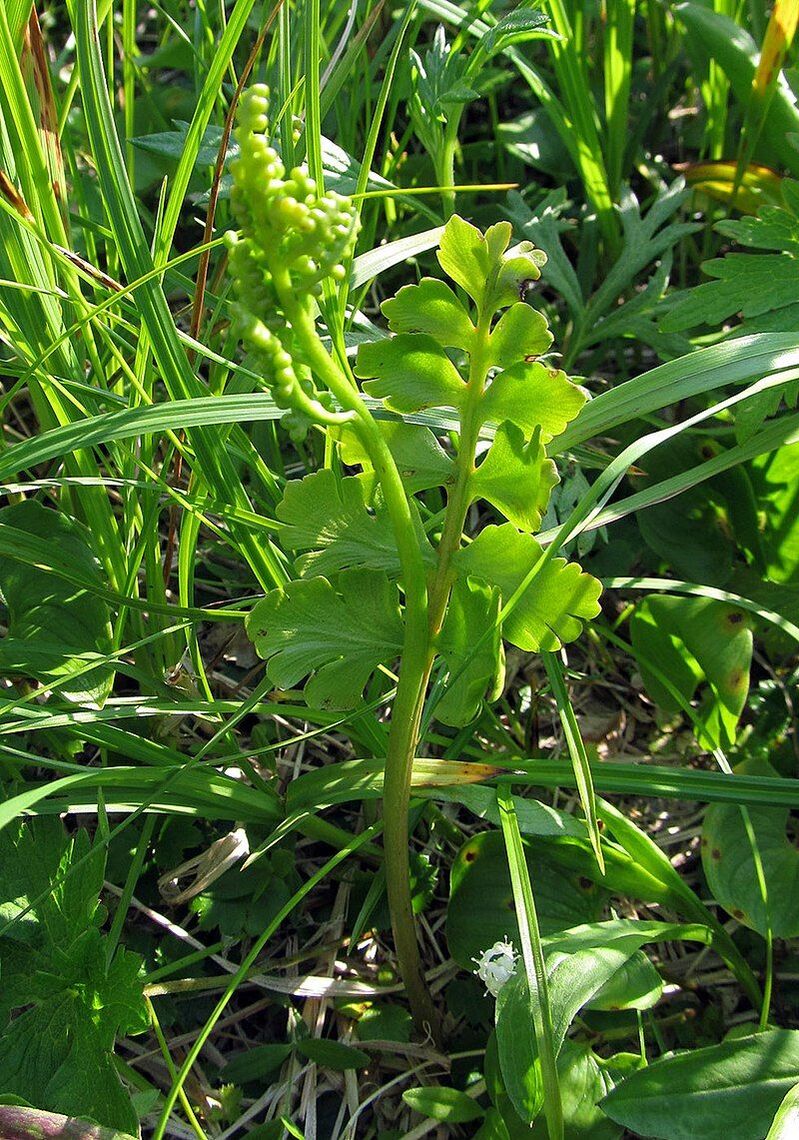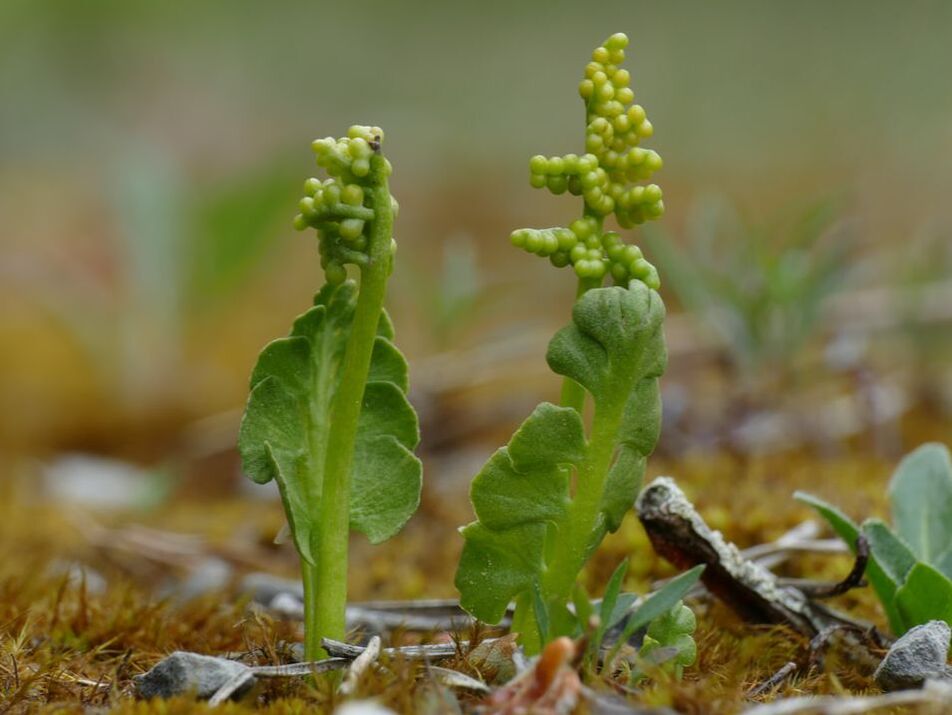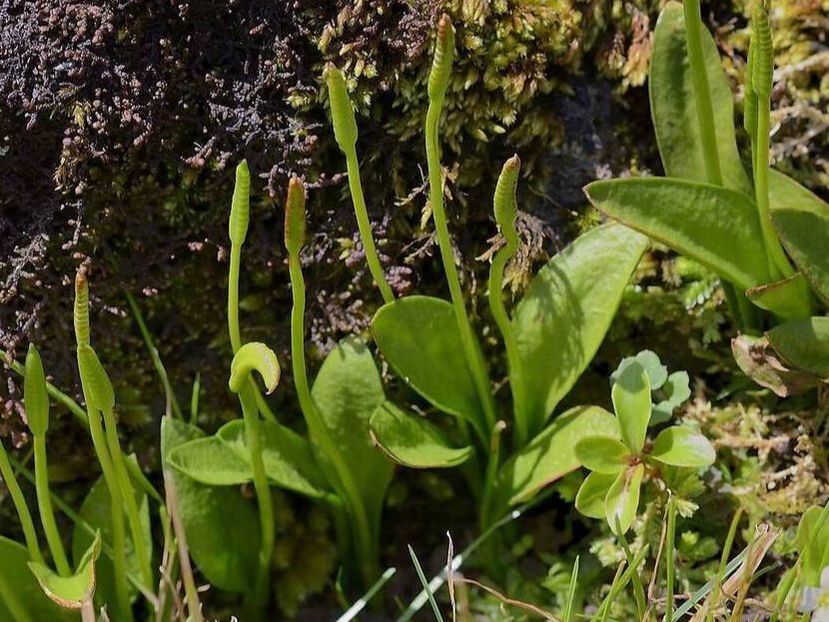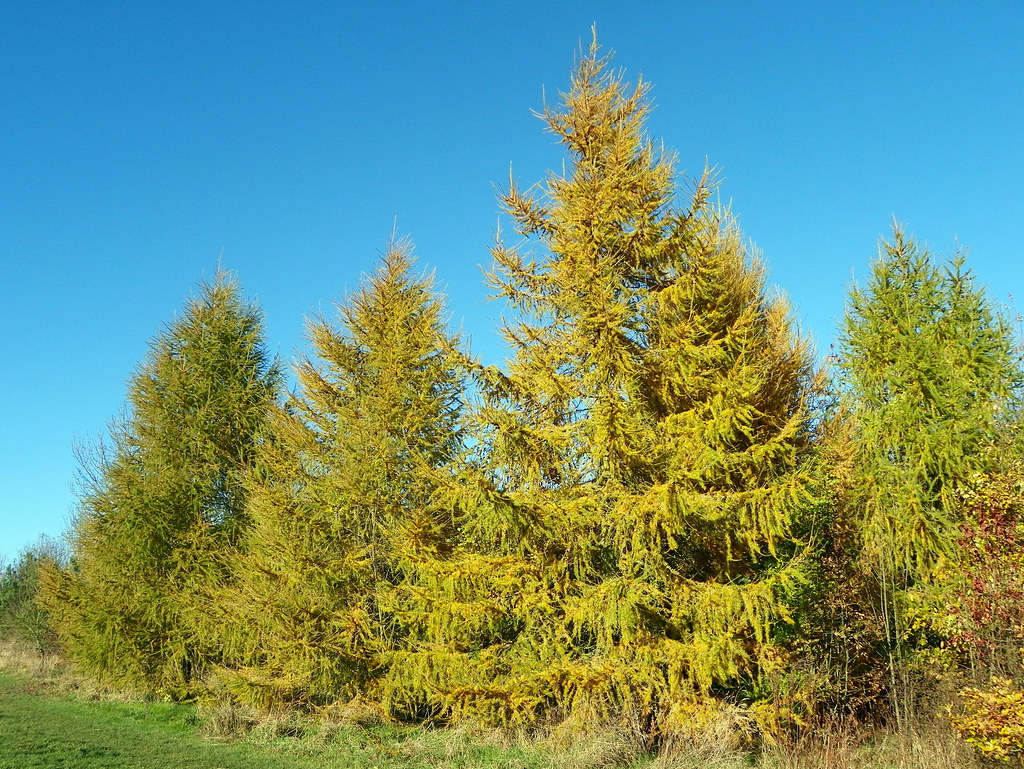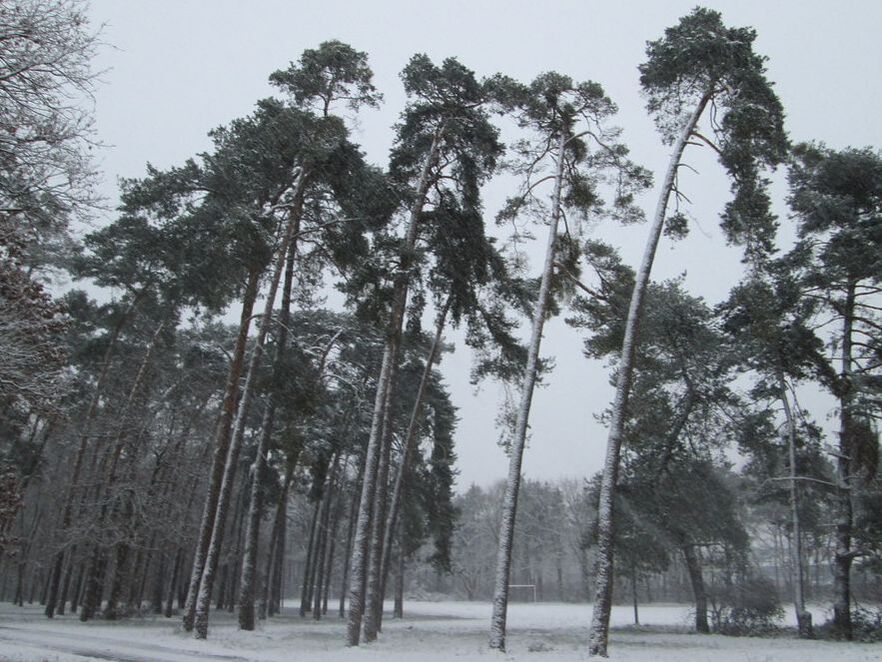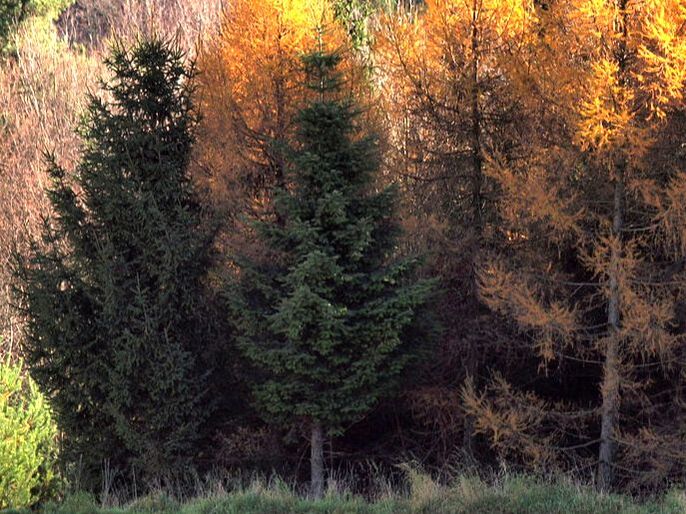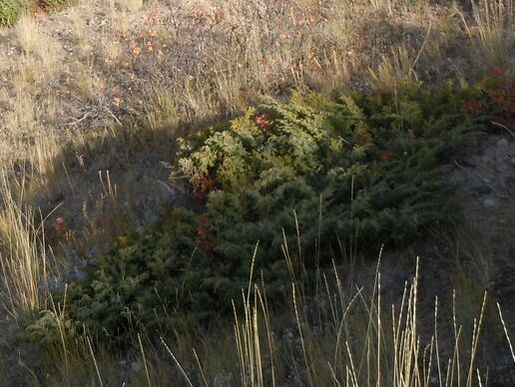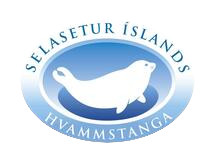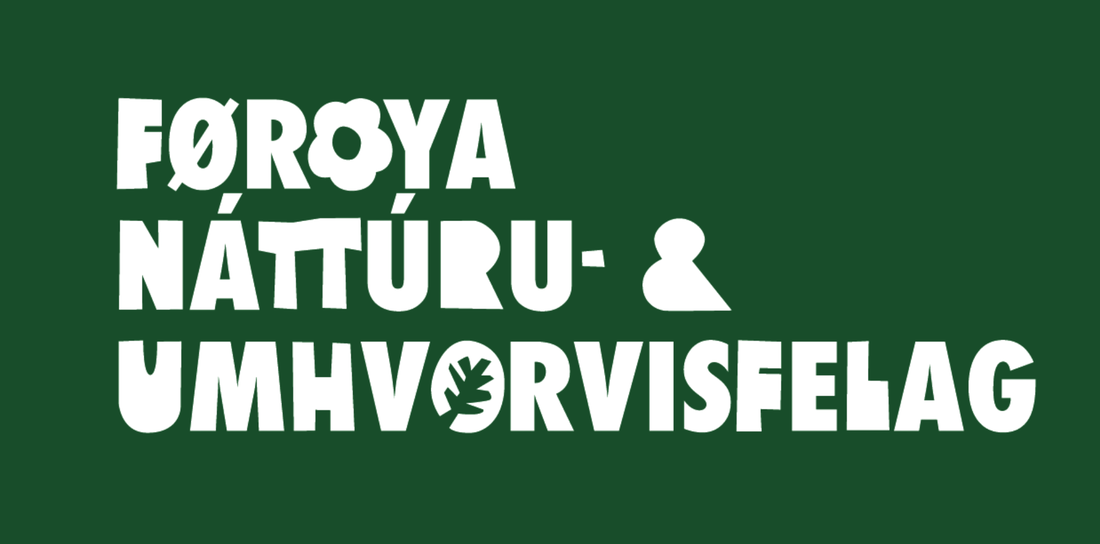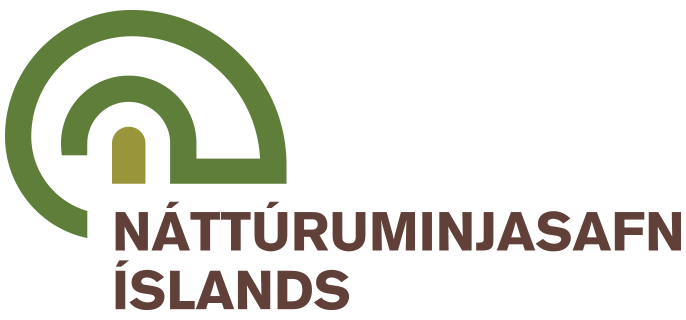The Conservation of Arctic Flora and Fauna (CAFF) group from the Arctic Council estimates that there are about 2,218 vascular plant species in the Arctic itself, without counting what they consider to be subarctic areas like most of Iceland, Fennoscandia, and the Faroe Islands. Vascular plants grow on a stem which transport nutrients and water, and they have roots that get these nutrients from the ground. These include notably flowering plants, also called angiosperms, as long as non-flowering plants: conifers, ferns, horsetails, and clubmosses. These plants reproduce via seeds or spores, but do not produce flowers or fruits. Some examples of non-flowering vascular plant species found in the East Atlantic Arctic are described below, with their distribution within the East Atlantic Arctic and some interesting features.
Clubmosses, also called lycopods (class Lycopodiopsida), are a group of vascular plants which grow in branching stems with simple leaves. Like ferns, these plants do not reproduce through seeds like angiosperms and gymnosperms, but through spores (unicellular units containing genetic material that are dispered in the air). There are three orders of lycopods, each containing only one family. The three orders respectively contain the clubmosses and firmosses, the spikemosses or lesser clubmosses, and the quillworts. Examples of East Atlantic Arctic lycopods include:
- The Northern firmoss Huperzia selago. This clubmoss species is mostly found in boreal and subarctic areas, but although relatively rare, it is still present in Iceland, and southeastern and southwestern Greenland. It is not found in Fennoscandia.
- The Lesser clubmoss Selaginella selaginoides. Like some other lycopods, this small plant resembles a moss but is in fact a vascular plant. It has a circumpolar distribution, and is very common in Iceland. It is also found in northen Fennoscandia and both the western and eastern Greenlandic coasts, although it is less common in these areas. It is found in the Faroe Islands.
- The Lake quillwort Isoetes lacustris. This quillwort could be confused with a tuft of grass or sedge, but it not related to these families. It is aquatic, living on shallow lake or pond bottoms. It is found in alpine and northern regions of Europe, the Faroe islands, southwestern Iceland, and throughout Fennoscandia.
Ferns form the group Polypodiopsida, which contains all vascular plants that reproduce via spores except for lycopods. Ferns are divided into four different subgroups, and three subgroups are found in the East Atlantic Arctic:
- Leptosporangiate ferns.
- Horsetails.
- Moonworts and Adder's-tongues.
|
Leptosporangiate ferns are what we usually simply call ferns. They are the most widespread and common type of fern, with many different families and shapes. They grow in fronds that have pinna arranged on both sides of central rachis. Like other ferns, they reproduce through spores which are produced by sporangia. Sporangia clusters can be found on the underside of fertile fronds, and they are called sori. Examples of ferns found in the East Atlantic Arctic include:
|
Horsetails are a type of primitive ferns which have existed for at least 360 million years. At some point in prehistoric times, horsetails were much more diverse and some species could grow to the size of trees. Only one genus remains today, Equisetum. Some species, like the Southern giant horsetail Equisetum giganteum, can still grow to heights of two meters. However, species that grow in the Arctic and subarctic are much smaller. Some examples include:
- The Field horsetail Equisetum arvense. This species is recognized by its thin stems which support many branches reaching upwards. It can be grass-like in appearance. It is a widespread and common circumpolar Arctic species, found in Iceland, the Faroe Islands, western and eastern Greenland, Svalbard, and northern Fennoscandia.
- The Rough horsetail Equisetum hyemale. This horsetail grows straight with no branches. It is has a circumpolar distribution but is more boreal and subarctic than Arctic. It is common in Iceland, and rare in northern Fennoscandia and southeastern Greenland.
- The Variegated horsetail Equisetum variegatum. This horsetail is similar in appearance to the rough horsetail but grows lower, and has zigzag black and white patterns between sections of the stem.
Moonworts are part of the family Ophioglossaceae in the group Ophioglossidae., which also contains the grape ferns, adder's-tongues, and whisk ferns. Some examples of species that belong to this group that can be found in the East Atlantic Arctic include:
- The Northern moonwort Botrychium boreale. This small moonwort grows mostly in boreal zones, but it is also found in Arctic areas, where it is usually rare. As such, it is a rare species in Iceland, western and eastern Greenland, Svalbard (where it is considered critically endangered), and northern Fennoscandia.
- The Common moonwort Botrychium lunaria. This moonwort is similar to the northern moonwort, but it is slightly taller and its leaves are not lobed. It is also more common in the Arctic, and has a circumpolar distribution. It is a common species in Iceland and western and eastern Greenland, but is rarer in northern Fennoscandia. Like the northern moonwort, it is very rare in Svalbard where it is considered critcally endangered.
- The Small adder's-tongue Ophioglossum azoricum. Small adder's tongue is a low-growing species found from Italy and central Europe to Iceland and eastern Greenland. In both Iceland and Greenland, it is very rare and only found in geothermal and sheltered areas.
Conifers are not angiosperms (flowering plants), but gymnosperms. Like angiosperms, gymnosperms reproduce using seeds, but they do not produce flowers and the seeds are not contained in fruits. Conifers contribute very little to the diversity of Arctic flora, with only 16 species growing in the Arctic. On the other hand, they are very common in the subarctic boreal zones, where they are the characteristic feature of the taiga or boreal forest biome, one of the most common land biomes.
|
Pinaceae is the pine family, and it also includes larches, spruces, cedars, firs, and more.
|
The Common juniper Juniperus communis is part of the cypress family Cupressaceae. It is one of the only native conifer species to the Faroe Islands, where it has significantly declined since the viking age, Greenland, where it is found on the southern coast, and Iceland. It is also found throughout Fennoscandia. The subspecies found in all of these regions is the Alpine juniper which grows very low to the ground as a shrub or a mat. |
Pictures
- "File:1024 Zerbrechlicher Blasenfarn (Cystopteris fragilis)-2219.jpg" by Hedwig Storch is licensed under CC BY-SA 3.0.
- "Fur club moss (Huperzia selago) & Heather (Calluna vulgaris)" by gennadyalexandrov is licensed under CC BY 2.0.
- "Lesser Clubmoss Selaginella selaginoides" by LennyWorthington is licensed under CC BY-SA 2.0.
- "Isoetes lacustris shoot and tufts of roots. Llyn Fach, 1971 Quillwort, a rare fern ally." by Mary Gillham Archive Project is licensed under CC BY 2.0.
- "Asplenium viride" by Ashley Basil is licensed under CC BY 2.0.
- "Woodsia glabella" by Tab Tannery is licensed under CC BY-NC-SA 2.0.
- "Variegated Scouring Rush" by milesizz is licensed under CC BY-NC-ND 2.0.
- "Common Moonwort - Botrychium lunaria" by Björn S... is licensed under CC BY-SA 2.0.
- Botrychium boreale-MW0155968-live.jpg by Копылов-Гуськов is licensed under CC BY 4.0.
- "ophioglossum azoricum" by Paulo Ventura Araújo is licensed under CC BY-NC 4.0.
- "European Larch (Larix decidua) trees" by Peter O'Connor aka anemoneprojectors is licensed under CC BY-SA 2.0.
- "Pinus sylvestris" by anro0002 is licensed under CC BY-SA 2.0.
- Juniperus communis (5107229545).jpg by Matt Lavin is licensed under CC BY-SA 2.0.
References
- Alsos, I. G., Arnesen, G., Elven R. (1998-2020) The Flora of Svalbard. http://svalbardflora.no/oldsite/
- Brunton, D. F., Sokoloff, P. C., & Aymerich, P. (2020). The taxonomy, status and origin of Isoetes ×brochonii and I. creussensis (Isoetaceae), two Pyrenean endemic taxa. Botany Letters, 167(4), 391–408. https://doi.org/10.1080/23818107.2020.1790034
- Daniëls, F.J.A., Gillespie, L.J., Poulin, M., Afonina, O.M., Alsos, I.G., Aronsson, M., Bültmann, H., Ickert-Bond, S., Konstantinova, N.A., Lovejoy, C., Väre, H., Bakke Westergaard, K. (2013). Flora. In Arctic Biodiversity Assessment (pp. 310–352). https://www.caff.is/assessment-series/arctic-biodiversity-assessment/214-arctic-biodiversity-assessment-2013-chapter-9-flora
- Elven, R., Murray, D. F., Razzhivin, V. Y., Yurtsev, B. A. Annotated Checklist of the Panarctic Flora (PAF) Vascular plants. http://panarcticflora.org/
- Fosaa, A. M. (2001). A Review of Plant Communities of the Faroe Islands. https://www.researchgate.net/publication/261180057_A_Review_of_Plant_Communities_of_the_Faroe_Islands
- Icelandic Institute of Natural History. http://www.ni.is/biota/plantae.
- The Editors of Encyclopaedia Britannica. (2014). Horsetail. Encyclopaedia Britannica. https://www.britannica.com/plant/horsetail
